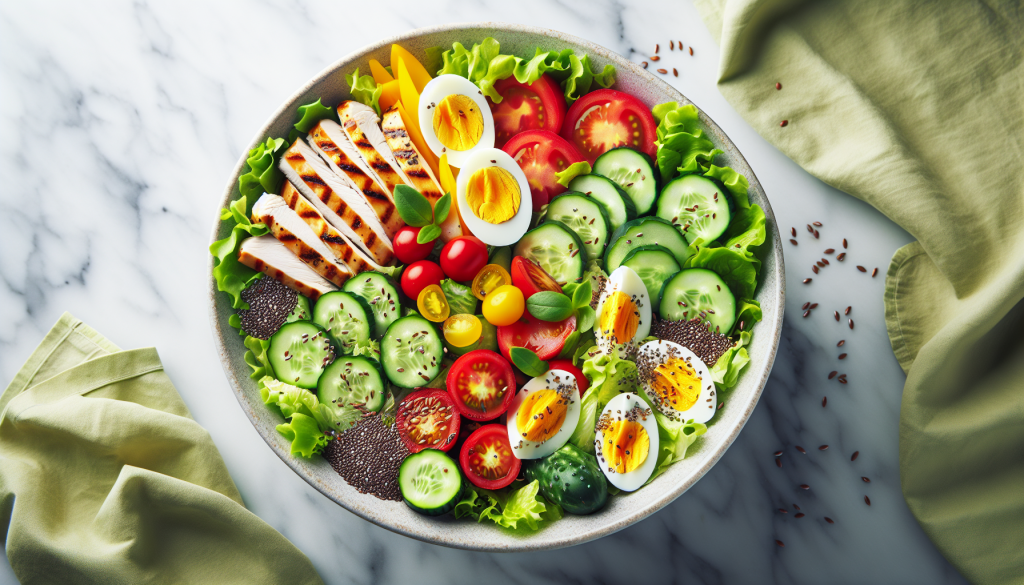
In the quest for effective weight loss, one of the most significant challenges is maintaining a sense of fullness while keeping calorie intake low. Consistently feeling hungry can derail even the most well-intentioned dieting efforts. Fortunately, there is a solution: incorporating low-calorie foods that are both satisfying and nutrient-dense. Here, we explore a selection of these foods, designed to help you feel full without packing on extra calories.
Fiber-Rich Vegetables
Vegetables are the cornerstone of any successful low-calorie diet, thanks to their high fiber content and low calorie density. Leafy greens like spinach and kale, as well as cruciferous vegetables such as broccoli and Brussels sprouts, are excellent options. These vegetables are packed with vitamins, minerals, and antioxidants, supporting overall health while promoting feelings of fullness. Additionally, the bulk they provide helps keep hunger at bay, allowing you to satisfy your appetite with fewer calories.
Lean Proteins
Including lean proteins in your diet is a powerful strategy for managing hunger and reducing calorie intake. Foods like skinless chicken breast, turkey, and fish are not only low in calories but also high in protein. Protein has a higher thermic effect, meaning your body uses more energy to digest it, effectively boosting metabolism. Moreover, it helps stabilize blood sugar levels and prolongs the feeling of fullness, making it easier to stick to your dietary goals.
Legumes and Pulses
Beans, lentils, and other legumes are fantastic components of a low-calorie diet. They are rich in fiber and protein, offering a potent combination for enhancing satiety. Studies suggest that incorporating beans and legumes into meals can significantly reduce calorie consumption later in the day. Additionally, their versatility allows them to be used in a wide array of dishes, from soups and stews to salads and side dishes.
Fruits with High Water Content
Fruits such as watermelon, strawberries, and cantaloupes can help curb hunger while quenching the body’s need for hydration. With their high water content and natural sweetness, these fruits serve as satisfying, low-calorie snacks or dessert alternatives. They provide essential vitamins and antioxidants, contributing to your overall health while keeping calorie consumption down.
Whole Grains
Oats, quinoa, and barley are examples of whole grains that can aid in weight loss when consumed in moderation. Unlike refined grains, whole grains contain fiber-rich outer layers, which slow digestion and lead to a gradual release of energy. This helps prevent blood sugar spikes and crashes that can trigger cravings. Integrating whole grains into your meals ensures sustained energy levels and a prolonged feeling of fullness.
Dairy and Dairy Alternatives
Low-fat or fat-free dairy products like Greek yogurt and cottage cheese can satisfy cravings without excessive calorie intake. These options are rich in protein and calcium, which are crucial for maintaining muscle mass and bone health during weight loss. Greek yogurt, in particular, can be a filling base for breakfast or a snack, especially when combined with fruits or a sprinkle of nuts.
Nutrient-Dense Snacks
For many, snacking is part of the everyday routine. Choosing nutrient-dense snacks such as air-popped popcorn, nuts, and chia seeds can offer a satisfying crunch without a calorie overload. Popcorn is particularly worth noting because it is high in fiber and can be consumed in generous portions for relatively few calories. Chia seeds, which expand in the stomach when mixed with liquid, add a dose of protein and omega-3 fatty acids, further enhancing their benefit in a weight-loss diet.
Soups and Broths
Including soups, particularly those based on broth, can be an effective method to reduce calorie intake while feeling full. The liquid content in soup helps to fill the stomach, sending signals of fullness to the brain. For best results, opt for soups loaded with vegetables and lean proteins, and avoid those high in cream or added sugars.
Conclusion
Successfully losing weight while feeling full is genuinely achievable with the right selection of foods. By focusing on low-calorie options rich in fiber, protein, and water, you can maintain a satisfying diet that supports weight loss. Remember, enjoying a variety of these foods not only aids in shedding pounds but also ensures a balanced and nutritious diet that supports overall well-being. Embrace these foods as part of your daily meals, and experience how satisfying eating lower-calorie foods can be on your journey to achieving your health goals.